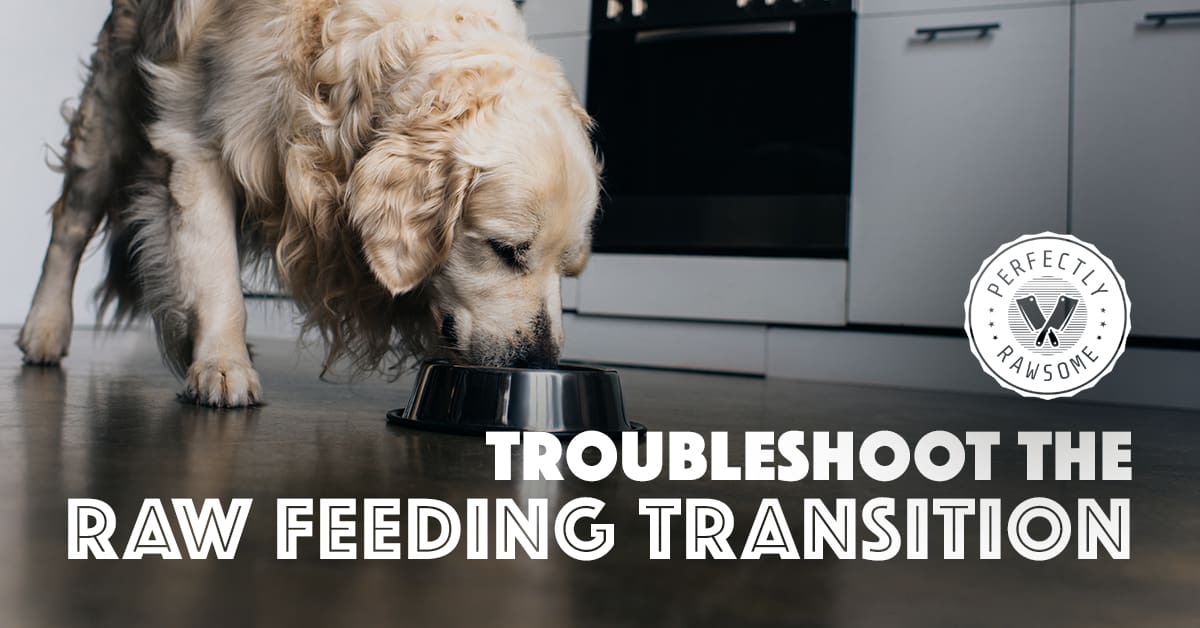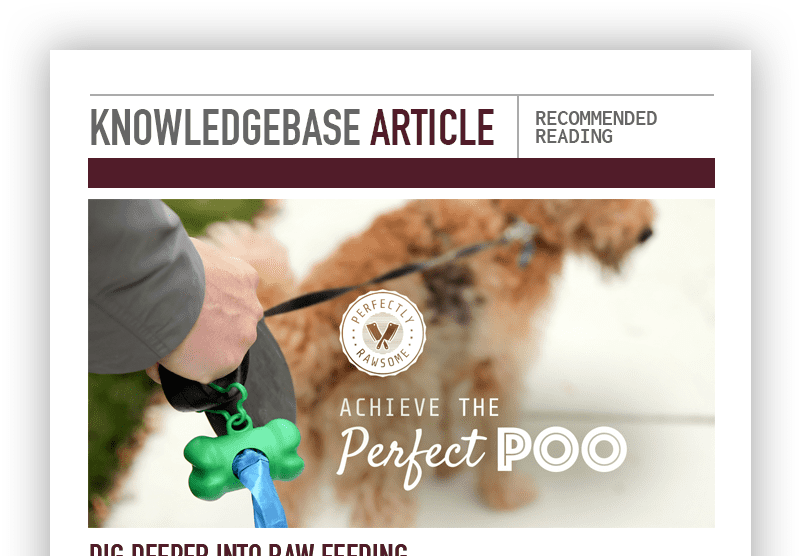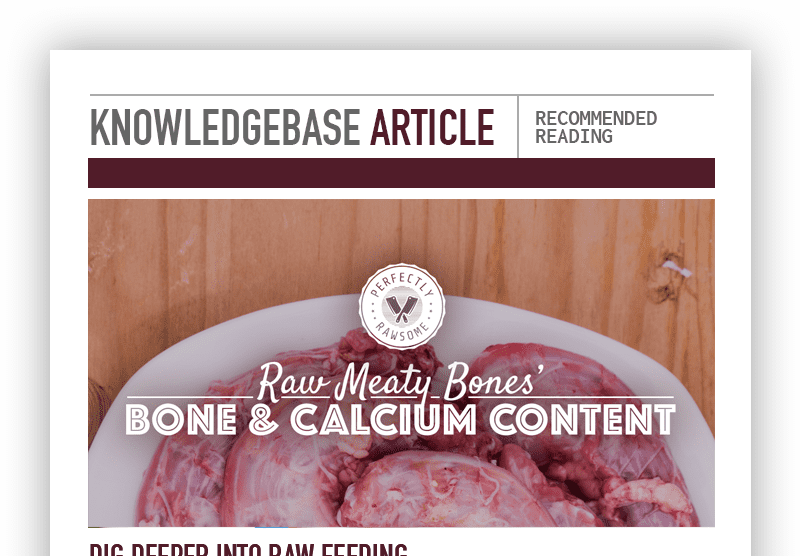Even after identifying the 10 common mistakes beginners make when transitioning to raw, changes and hiccups may happen along the way. Monitoring a dog’s stool production and consistency during the transition phase will allow pet parents to make any necessary adjustments the transition. The following are some variables to be aware of and prepared for.

Less Water Consumption
It is normal to see a dog’s water consumption decrease significantly when transitioning to a raw diet. Dry dog food has almost no moisture, whereas a raw diet provides about 60-70% water via food. Therefore, the dog is receiving the majority of its water requirements through the diet.
It’s still essential to always have fresh water available even though the dog may not consume much. If the pet parent is concerned with a dog’s lack of water intake, adding moisture into the diet is also an option:
Less Stool Production
Since dogs and cats are designed to digest and metabolize raw foods, they will produce less waste. Additionally, raw diets do not contain unnecessary filler ingredients. The body digests and absorbs the majority of the nutrients from the food in a raw diet.
Depending on the number of meals fed in a day, it is normal to see a dog eliminate 1-2 times a day. Puppies may exceed these numbers since they are fed more frequently than adults. Additionally, if fed one meal a day, it is normal to see a dog eliminate every other day.
Bile Vomiting
Liquid, white foamy, yellow bile vomits are referred to as “hunger pukes”. A dog’s stomach fed dry food is typically bloated with food, whereas a raw-fed dog’s stomach empties out quickly and the sensation of hunger hits dogs faster. The anticipation of food causes the body prepare for digestion (the gallbladder releases bile). If food is not forthcoming, this causes the dog to feel nauseous…then the dog vomits. There are three simple solutions to this problem:
Vary Feeding Times
Vary the time of day that the dog is fed. This way the dog does not know when the next meal is coming and cannot anticipate it.
Snacks
Feed a small snack in between meals.
Diarrhea
GI irritation can happen for some dogs who have been eating a high carbohydrate diet (dry dog food) for a prolonged period of time. Raw feeding usually does not include high amounts of carbohydrates. Instead, it provides quality protein and healthy fats.
If a dog experiences diarrhea during the transition, feed lower fat ingredients. If poultry is being fed, remove the skin and trim away any excess fat. This will provide a meal lower in fat to help the body acclimate to digesting raw protein and fat.
Digestive enzymes and probiotics are ideal for helping dogs transition into raw feeding, especially when a dog is showing signs of GI upset. More often than not, dogs will transition into raw feeding with ease. However, some lack the appropriate gut flora to help digest the new food and additional supplementation is beneficial.
Supplemental Support
Give Slippery Elm Bark (SEB) powder 15 minutes before a meal when diarrhea is present to help with GI inflammation. When diarrhea stops, stop giving the SEB powder. The recommended dosage for SEB is 1/4 tsp per 10lbs (4.5kg) body weight.
Achieve the Perfect Poo Article
One component of raw feeding, although not very glamorous, is to oversee stool production. Follow the recommendations in the perfect poo article when a pet is experiencing diarrhea.
Constipation
Overfeeding calcium-based foods, particularly raw meaty bones, will result in overly hard, chalky, and/or crumbly stools. Many pets are capable of eliminating hard stools. However, constipation is possible if too much bone has been fed.
If too much bone is fed, eliminate raw meaty bones and other unnecessary additional ingredients until the issue is resolved. Adjust meals to only include muscle meat and organs. The boneless muscle meat and organs should have a laxative effect to assist in bowel movements. Additionally, add in SEB powder which will lubricate the colon wall and help with the elimination of stool during constipation.
Supplemental Support
Slippery Elm Bark (SEB) has dual purposes for supplemental support. Give SEB powder 15 minutes before a meal when constipation is present to help lubricate the GI. When stools regulate, stop giving the SEB powder. The recommended dosage for SEB is 1/4 tsp per 10lbs (4.5kg) body weight.
Bone & Calcium Content in RMB
Raw meaty bones (RMB) contain edible bone, muscle meat, fats, and connective tissue; and each RMB will vary in the edible bone content. Calculate the amount of edible bone present to prevent constipation in raw diets.
Resource Guarding
Resource guarding is often brought up in raw feeding due to the simple fact that raw food is highly valued by dogs. Touching a dog while it eats, playing with a dog’s food, taking food away without a trade item, and other similar actions are very dangerous when a dog exhibits resource guarding. However, resource guarding over raw food is normal behavior. The dog simply values the new food source and does not want to lose it.
Pet parents should provide a dog space when eating. Do not hover. Instead, watch from a safe distance. If the dog needs to be approached, walk up, drop another piece of food, and walk away. This will show the dog someone is approaching to give – not to take.
CLOSING COMMENTS
Transitioning to a raw diet may go smoothly while other times there are road bumps along the way. These are the common problems that may arise when transitioning to a raw diet and how to overcome those hurdles.


